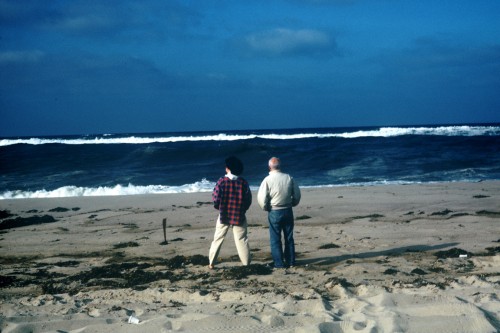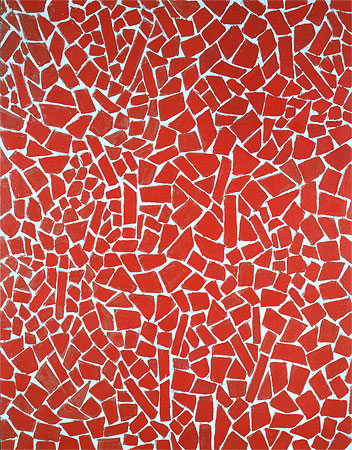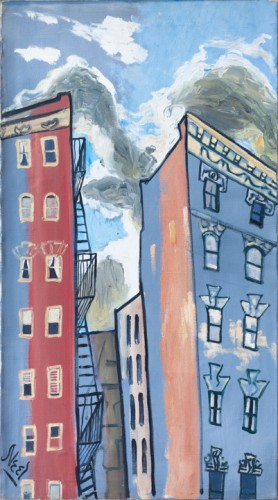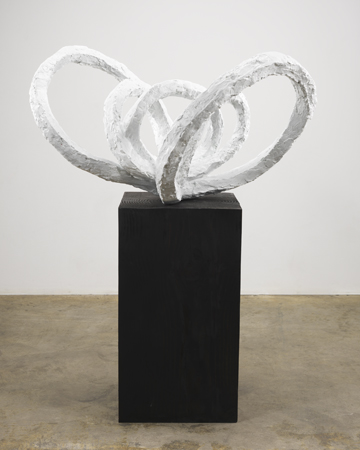After I had completed my first major read-through of the diaries and papers of the painter Jack Tworkov in preparation for editing them into a book of collected writings, Jack’s daughter Helen Tworkov asked me if I had discovered anything that had surprised me. I could answer with frankness, no. That is, Helen and her sister Hermine Ford had given me the privilege of access not only to Jack’s writings about art, texts that he had either published in his lifetime or had saved because he must have known that they were of some art historical interest and, most importantly, because they were of personal use to himself in his studio work, but also to his most private thoughts, or at least those he had put to paper and preserved over a nearly 50 year time period. I was infused with the complexity of intimacy that comes from being immersed in the full drama of studio and career struggles and of the private details even of his married life in ways neither he nor I could never have imagined, but, overall, I knew the stories, the struggles, the aesthetics, and the sensibility deeply, for I had observed Jack and his work with admiration and love for all my life.
Indeed, my work as the editor of The Extreme of the Middle: Writings of Jack Tworkov, published in 2009, had a deep back-story. I could not remember a time that I did not know Jack and his family, since my parents and the Tworkovs became friends when I was, as far as anyone remembers, still a toddler. The Tworkovs were incredibly dear to my family during my childhood and all the more so after my father Ilya Schor died in 1961 and Wally and Jack Tworkov took my mother and me into their Provincetown home for a month of that summer and the next. Though Jack would have been very surprised that the little girl to whom he had taught the dog paddle, or the teenager he had found so rough and recalcitrant, and the young artist about whose work he had continued doubts, ended up being the one to finally shepherd his writings into print and to create in effect the autobiography he had never written as such. But it seemed to me finally that it made the most perfect sense, though I sometimes in those six years rued the day I had ever taken on such a massive task and such a daunting responsibility. I cursed him for writing so much of interest that I found hard to cut!
I set out to structure the many different types of texts so that the complexity and totality of the life of an artist and a particular man would be as transparent as I could make it. I did not make what I knew would have been the more conventional choice, to edit down to what history already thought was important, which in Tworkov’s case would have been exclusively his writings from the New York School period. I wanted to address his role within that history, but I thought his writings on the death of his mother were as beautifully written and as important to the meaning of his work as his long description of a conversation with John Cage, I knew his remembrances of the painful experience of immigration deepened one’s understanding of his landmark 1950 essay, “The Wandering Soutine.”
With in my mind a reader who would perhaps also be a painter, or perhaps a young artist confronting the huge challenges of how to continue to make art and have a personal life, or perhaps an older artist continuing to work seriously in the studio despite the frequent disappointments careers bring, I used the richness of levels and types of writing Tworkov had produced to situate him and the reader in a vast human field and historical period of art making. I tried to give the reader a sense of what it means to engage in a lifetime struggle to be an artist and a man.
As I went through his diaries and letters, I occasionally found references to my family and to me…not always flattering, much to my dismay. I also found reference to events in which I had been a participant, particularly in later years, which I not only remembered clearly but which, being every bit as inveterate a self-documenter as Jack, I had also noted in my diary.
For example, Jack wrote in his journal on September 5, Saturday (1981): “I picked up Resia and Mira and drove them to Hermine’s place on Highhead. We walked to the beach with Hermine, Bob and Erik. We watched the huge waves sweeping the shore. The park rangers put up signs to keep cars and people off the beach. We came back and had tea. I got in a talking mood and reminisced about my childhood, about school and college, about Janice and Ford. We saw Bob’s drawings and drove home. […]”
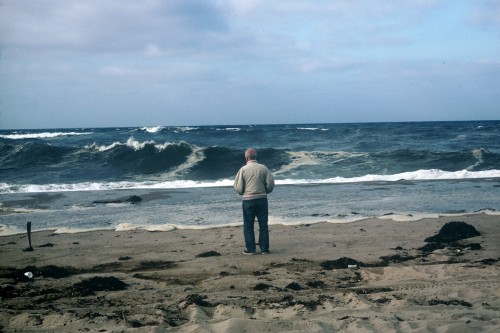
My diary entry for the same day, Saturday, September 5, 1981: “windy day. Jack took us out to Bob & Hermine’s–walk to ocean, very nice visit, Jack very talkative.”


I had not forgotten that day, our being together. I remember also quite clearly that we looked at Hermine’s drawings too! And that we all enjoyed the way his son-in-law the painter Bob Moskowitz had prepared eggplant!!! But if you had quizzed me about what Jack had talked about, I wouldn’t have been able to tell you. But I listened and I heard, probably not for the first time, and the stories were embedded so that when I rediscovered the details in his writings, I already knew.
[References above are to my mother Resia Schor , to Jack’s eldest daughter Hermine Ford, his grandson Erik Moskowitz, and to Robert Moskowitz, Janice Biala, and Ford Madox Ford]
That summer Jack was in remission from cancer. He was preparing for Jack Tworkov: Fifteen Years of Painting, a major exhibition of his paintings at the Guggenheim Museum, which opened in early 1982. Earlier that summer he wrote a letter to Andrew Forge, then dean of the School of Art and Architecture at Yale, where Jack had been chairman of the Department of Art through the late 60s, as part of a dialogue to help Forge write a catalogue essay for the exhibition. Here are some excerpts of his letter to Forge:
So for me geometrics, however simple and elementary, is a connection with something that exists besides, outside, myself. It is a small comfort, perhaps, indeed; but it is less hypocritical at the moment than the apparent ecstatic self-expression that a more romantic art calls for. Geometrics or any systemic order gives me a space for meditation, adumbrates my alienation.
There was a period when I felt connected. It was in the late forties and early fifties, the time of the club. It coincided with that short period after World War II when I really believed that, after the sacrifices and horror the world went through, we were embarked on a better world. There were a few years of euphoria. America emerged as a world-saver in spite of the shadow the bomb on Hiroshima had cast on that image. The abstract-expressionist movement, although negative in its rejection of all tradition and especially of the French art of the first half of the century, did reflect this positive element, the postwar euphoria, the sudden feeling of strength both physically and spiritually. As we know, that spirit did not last long. Pop came along with two tongues in its cheek. On the one hand, it took, as the living symbols of American culture, the hot dog and the hamburger–it was hard to know whether in praise or disgust. On the other hand, it revived a form of Dada revolt against art as the dress-up culture of the fathers. Only by then, the middle class, more than ever, was beyond shock or outrage and was led by the art market, which dealt primarily in names rather than esthetics. And name-making absorbed a good deal of the energies of the artists.
I have sometimes dreamt of painting my hatreds. If I didn’t, it was because of the fear that I would end up hating my painting. I’ve hated films that had the excuse that they were a true reflection of society but which I thought were themselves a contribution to the disease they were trying to depict.
The spectator who in front of my paintings will ask, “What does it mean?” has foregone the chance of seeing it. For the only meaning in the painting is in the seeing of it. But that is true in looking at any painting. If you only see the landscape, you are not seeing the painting. If you only see the portrait, you miss the painting.
There is an element in painting which I have often referred to as true, by which I mean not truth in a moral sense but the concern similar to that of a good carpenter who supports his eye with the try square and level, on which all other qualities base themselves. The spiritual essence we draw from art is the absence of falseness; it teaches us not only about art but how to judge anything in life, from the clothes we wear to the food we eat, from what the preacher says to what the politician says and does. Art can become the true square and level of all things–provided it is itself not askew.
It is not beauty that is the first concern of art and certainly not entertainment–but justness.
Where justness exists in a work, the artist’s personality disappears because the painting is the presence and not the painter.
There is another quality in a painting that cannot be described: it is the residue reflected in the painting of the artist’s pleasure in the making of it, especially the pleasure, the joy the artist experiences in the stages when the painting uncovers itself to his eyes. This is an internal experience of the artist which the attentive spectator can extract. It is something precious I get from a Cézanne, knowing very well he did not make it for me but it is there for me to have.
Trueness and pleasure add up to the most fundamental quality in a painting. If the artist cannot paint himself out of the picture, if he is caught up in attention-getting devices, if he becomes concerned with his effects on the audience, he cannot achieve justness. You can admire his devices but you cannot live with them. You cannot draw joy from them. At their worst such artists exploit the same world as the advertising fabricators: clever, ingenious, eye grabbing, but false.
Am I stressing an esthetic morality? I am. It’s what I get from Bach, Velázquez, Blake, Cézanne, Mondrian–and is rare in our present.[…] from The Extreme of the Middle, 8.47
Selections from this letter and other of Jack’s writings were later reprinted in Jack Tworkov: Paintings, 1928-1982, the excellent catalogue of his 1987 retrospective at the Pennsylvania Academy of Fine Arts that first made me aware of his writings, as I had by then just begun to write about art also and that ultimately led to my taking on the pleasure, the task, and the great responsibility of editing his writings. These are all included in The Extreme of the Middle.
*
Today, September 5, 2011, exactly thirty years have passed since that afternoon by the ocean. Jack died almost exactly a year later to the day, on September 4, 1982.
I thought today to look back to what he had been thinking thirty years before September 5, 1981, to bracket my brief reflections here. The closest entry is from October 24, 1951:
Did it ever occur to Sophocles to write a play about himself? Had the thought occurred to him he would have banished it as sacrilegious. He wrote about Ajax, Antigone, Oedipus, and Electra.
Could Ajax have written about Sophocles? Could Ajax have been an artist and still been a Hero? Ajax could have written about himself without becoming less of a hero only if what he wrote was not art. It was in the nature of Ajax that he could not contrive anything. He therefore lost to life but won his immortality. Only Odysseus of the heroes was different. He did tell of his own life only to make a work of art out of it. Ajax was noble. His nobility lay in the disdain of life on any terms except his own to a degree that was a challenge to the immortal gods. Odysseus was enamored of life and was not beneath embellishing its excitement with fine details from the imagination. He was a compromiser. He took life just as he found it. In order to cut a fine figure he used art to embellish it. He used art but he was no artist. He could not create anyone except himself. He was beloved of the gods because he resembled them enormously–since they were the creations of ordinary men.
Some artists, too, are the creations of the ordinary man.
Sophocles writing about Sophocles would have been lost in a maze of echoing mirrors.[…]
Everyone who is an artist does it at the expense of being a hero. When the artist conceives himself a hero, he ceases to be an artist and proceeds to destroy himself. Sophocles was a great artist because he endured. The artist to become an artist suppresses the hero in him. [from The Extreme of the Middle, 3.13]
*
Despite the many years I knew Jack, I thought there was not a single picture of him and me together. But I recently found a group of slides I took that day, September 5, 1981. And among them was a picture Hermine must have taken with my camera of Jack and me standing together looking at the big waves from a distant storm.
